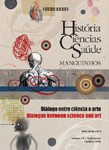June 2015

SciELO integrates the Biodiversity Heritage Library (photo: Leandro Negro/Agência FAPESP)
Collections of books and other print publications on biodiversity that are held by the libraries of leading research institutions around the world, including Brazil, are being digitized and made freely available to internet users everywhere by the Biodiversity Heritage Library (BHL), an international consortium of natural history and botanical libraries.
Launched in 2006 in the United States with the aim of making the world’s biodiversity literature available for open access and facilitating its use in research projects and for other purposes, the initiative has since expanded to form the Global BHL Network (gBHL), covering South Africa, Australia, Brazil, China, Egypt, the US, and Europe. Brazil participates through the BHL-SciELO Network.
Filling the gap
Abel Packer, who heads the SciELO Program, indicates that approximately 25% of Brazil’s scientific production relating to biodiversity is published by Brazilian journals, most of which are indexed by SciELO and made available via the web on an open-access basis.
However, a number of relevant documents are available only in physical form from libraries of universities and research institutions. “We want to fill this gap in public access to the Brazilian biodiversity literature with as comprehensive an effort as possible to digitize all the relevant printed material and publish it online so that it can interoperate with articles and journals published by SciELO and other information sources,” Packer said.
“Another goal is to make this material available globally by inserting it into the international flow of information via gBHL.”
In the past three years, 869 documents from four collections have been digitized. Indexing is ongoing.
The BHL-SciELO network aims to have more than 2,000 relevant documents on biodiversity digitized by the end of 2016. “We reckon between 3,500 and 4,000 documents would have to be digitized in order to assure exhaustive coverage of the relevant biodiversity literature that is held in physical form by Brazilian research institutions,” Packer said.
SciELO currently offers 45 indexed open-access journals on biodiversity, published in six Latin American countries: Argentina, Brazil, Chile, Colombia, Costa Rica, and Mexico. The virtual library also holds a biodiversity legislation collection, to be updated by the end of 2015.
Another new feature of SciELO is a biodiversity thesaurus in Portuguese, English, and Spanish. “The thesaurus will contribute to the automatic indexing of content and will enable users to search for keywords in all three languages,” Packer said.
Access to qualified information
For Carlos Joly, a professor at the University of Campinas (UNICAMP) in São Paulo State and head of FAPESP’s BIOTA Program, which is also involved in the project, access to qualified information about biodiversity is a tool of paramount importance to the Brazilian and international scientific community. Lack of such access is one of the main obstacles to diagnosing biodiversity in different parts of the world.
“Globally speaking, information about biodiversity is fragmented, dispersed and often hard to access because it’s available only in unpublished literature, such as theses, monographs, and reports,” underlines Joly.
“Even the published data often can’t be used to inform public policy because it’s so scattered. This is why, as part of FAPESP’s BIOTA Program, we developed a mechanism for compiling highly technical information combined with a cartographic database, all of which is available online. Moreover, it’s all open access so that it can be used to formulate and enhance public policy.”
The BIOTA Program’s biodiversity database, known as SinBIOTA, contains all of the available taxonomic information on the species that have been collected in the biomes of São Paulo State, including details of where, how, in what conditions, and by whom they were collected.
SinBIOTA is part of the Global Biodiversity Information Facility (GBIF), with which BHL also plans to integrate.
“If all goes according to plan, the GBIF database will be used by the Intergovernmental Platform on Biodiversity & Ecosystem Services (IPBES) to perform regional diagnoses,” said Joly, who is a member of the IPBES Multidisciplinary Expert Panel (MEP). IPBES was established in 2012 as an independent intergovernmental body open to all member countries of the United Nations with the mission of systematizing scientific knowledge on biodiversity for the purpose of informing public policy worldwide.
“We’re implementing an ambitious work program at IPBES,” Joly said. “One of the obstacles we’ve identified to diagnosing biodiversity in different parts of the world is a lack of access to qualified information. The GBIF and BHL will certainly be strategic partners in bridging this gap.”
So far, the BHL has digitized more than 45 million pages from over 159,000 publications held by the consortium’s member libraries.
Source: Agencia FAPESP











